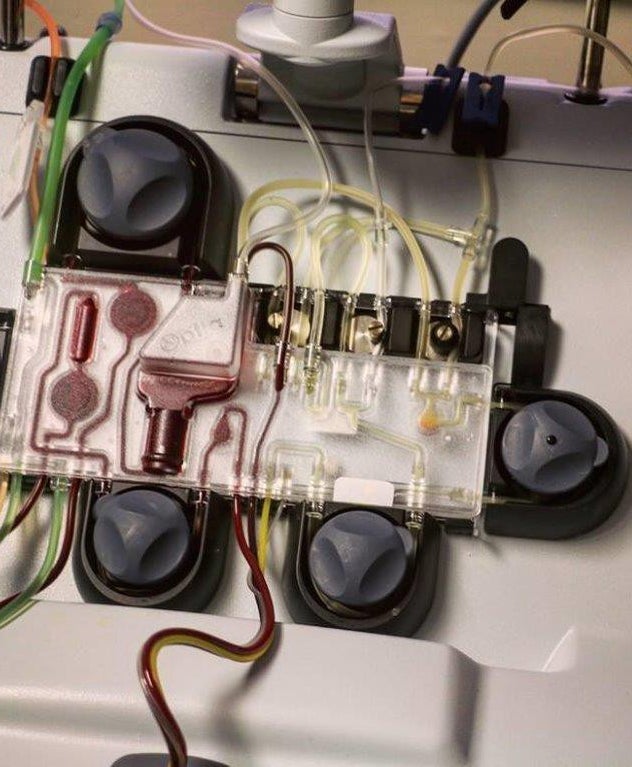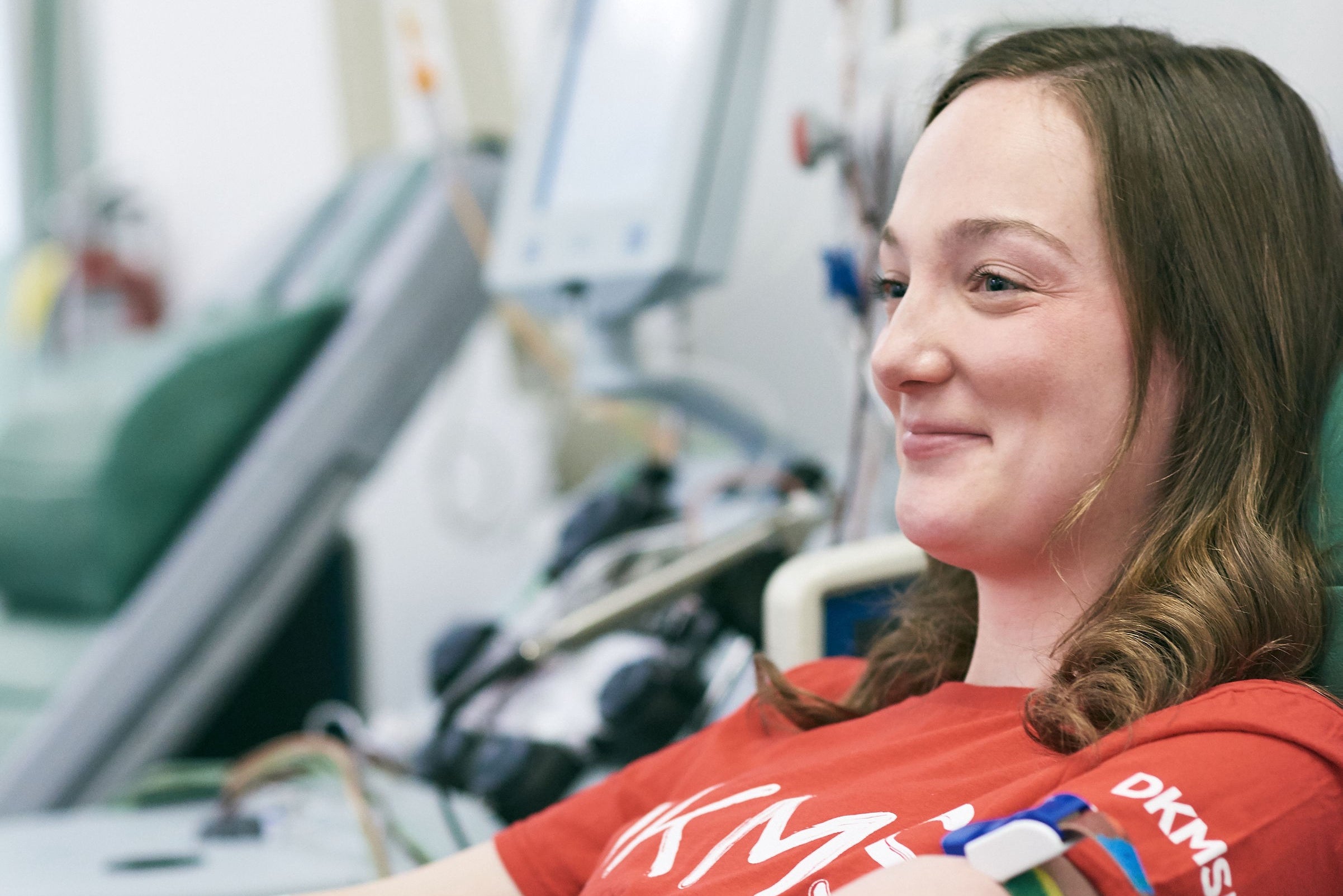6 Myths About Bone Marrow Donation Debunked
I encourage everyone interested in saving a life to learn the facts about bone marrow donation and make an informed decision about joining the fight against blood cancers and related disorders.

Bone marrow is the soft tissue inside certain bones where stem cells — immature cells that can become any type of blood cell — are produced. A bone marrow (or stem cell) transplant is done when a disease has affected the bone marrow’s ability to produce healthy blood cells or when high doses of chemotherapy have destroyed it.
Stem cell transplants are commonly used to treat blood cancers and disorders such as leukemia, lymphoma, sickle cell and multiple myeloma.
In some cases, a person’s own bone marrow — or stem cells derived from his own blood — can be collected before chemotherapy and then returned to his body to produce new blood cells.
In other cases, the stem cells from bone marrow or blood must come from a donor with a similar blood type and other blood characteristics.
However, not every person in need of a stem cell transplant finds a good donor match. That’s why building the pool of registered donors is so important: to increase the chance of finding matches for all patients so they can beat the odds.
Unfortunately, common myths about bone marrow donation too often keep people from registering as donors.
I encourage everyone interested in saving a life to learn the facts about bone marrow donation and make an informed decision about joining the fight against blood cancers and related disorders.
Here are the facts behind six common misconceptions about bone marrow donation:
MYTH #1 BONE MARROW DONATION IS PAINFUL

These days, there are actually two ways you can donate bone marrow: via peripheral blood stem cell donation or via bone marrow donation. While there is some pain associated with both methods, the amount of discomfort varies from method to method and person to person.
In peripheral blood stem cell donation, stem cells are collected from the bloodstream using a nonsurgical, outpatient procedure called apheresis. First, for five days prior to donation, the donor is given injections of a drug called filgrastim that increases the number of stem cells in his blood. The donation itself involves having blood removed through a needle in one arm and returned to the body through a needle inserted in the other arm. Peripheral blood stem cell donation takes about 4 to 8 hours on 1 to 2 consecutive days, and the donor typically goes home the same day he donates.
For bone marrow donation, marrow cells are collected from the back of the pelvic bone using a syringe. The donor receives general anesthesia, so no pain is experienced during the extraction, which takes about 1 to 2 hours. The donor may experience back or hip pain for a few days or even a few weeks afterward.
For bone marrow donation, there can be an overnight stay in the hospital.
MYTH #2 BONE MARROW DONATION MAY HAVE LONG-TERM CONSEQUENCES
Over the long term, donating stem cells by either method is relatively harmless to the donor. Bone marrow levels typically return to normal within a few weeks of the donation, and donors can return to school, work, or most other activities within 1 to 7 days.
In the short term, the drug filgrastim, used in peripheral stem cell donation, may cause nausea, vomiting, bone pain, muscle aches, fatigue, and headache.
The use of anesthesia during bone marrow donation may cause the donor to feel tired or weak or to have trouble walking for a few days. And, as noted above, bone marrow donation can cause back or hip pain for days or weeks, as well as headache, fatigue, and bruising.
MYTH #3 BONE MARROW IS TAKEN FROM THE SPINE
Bone marrow donations have nothing to do with the spine. Peripheral blood stem cell donation — the method used in about 80 percent of cases — involves collecting blood stem cells from the bloodstream.
For bone marrow donation, which is the less common method, marrow is extracted from the back of the donor’s pelvic bone — not the spine — using a special syringe.
MYTH #4 BONE MARROW DONATION IS EXPENSIVE
A bone marrow transplant procedure is expensive, but there is no cost to the donor for donating bone marrow or stem cells.
For donors who register with DKMS, the organization will take care of your travel costs, meals, and lodging expenses, and the patient’s health insurance covers the costs of pre-donation exams and the donation procedure itself.
Other nonprofit bone marrow registries help donors in similar ways.
DKMS will also cover the costs for a companion to travel to the donation with you. Your own health insurance will never be used. Additionally, if your employer does not provide paid time off for the donation, DKMS has a financial assistance program for compensation of lost wages.
MYTH #5 BONE MARROW DONATION ISTIME-CONSUMING
In most cases, donors are asked to donate within one to three months after receiving a request. DKMS will always try to accommodate the donor’s schedule.
For peripheral stem cell donations, the donor must visit a medical office for filgrastim injections for the five days before the procedure, and then the donation takes roughly four to six hours over the course of one day. Donors typically do not stay overnight in the hospital, and most are able to return to work, school and their normal schedule within a few days.
The bone marrow extraction process takes one to two hours, and donors may stay overnight at the hospital. Even so, most are able to return to their normal schedule within days.
MYTH #6 FAMILY MEMBERS CAN DONATE ALL NEEDED BONE MARROW
Each year, more than 170,000 Americans are diagnosed with hematologic cancers — cancers of the blood, bone marrow, and lymph nodes. That’s one diagnosis every 3 minutes. Every 9 minutes a person dies from one of these diseases.
When a stem cell transplant is being considered, doctors look to patients’ families first for a match, starting with siblings, who have a 1 in 4 chance of being a close match.
But only 30 percent of patients are fortunate enough to find a match within their own family. The vast majority of patients in need of a transplant must rely on donors outside their families.
The need for donors is critical, especially for those from racially and ethnically diverse communities, who face much lower odds of being able to find a match.
Being a bone marrow donor is a serious commitment, but the reward is priceless: You can save someone’s life.
Swabbing your cheek is all it takes to register as a potential donor. For more information or to register, please visit dkms.org.
This originally appeared on EverydayHealth.